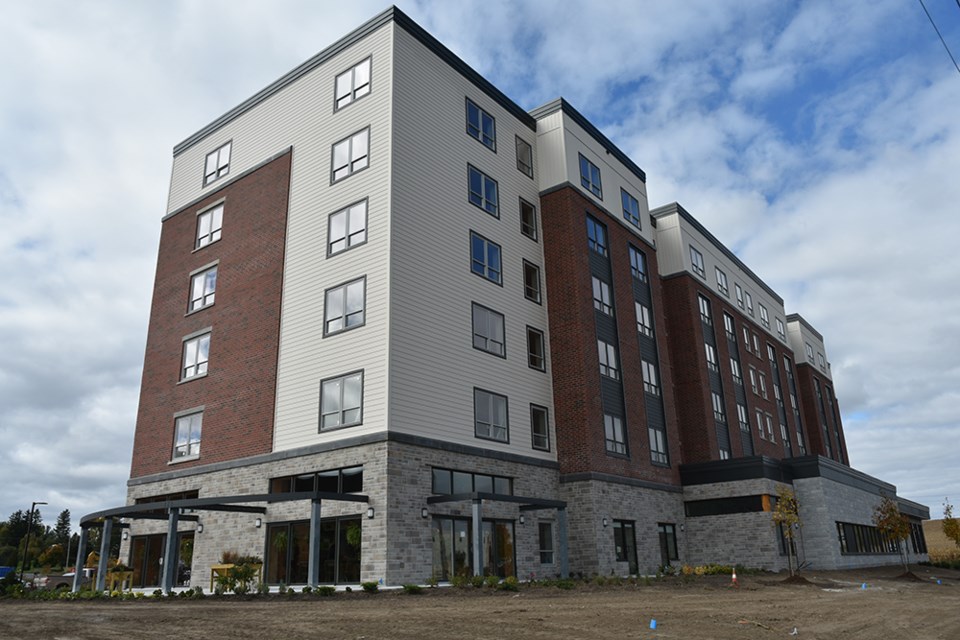Town council is re-evaluating its three Community Improvement Plans (CIPs). The CIPs enable council to provide incentives for projects that enhance the community.
All three CIPs have met with success, to varying degrees, and it makes sense to update them. But we also need to ensure town council continues with a range of supports to achieve its goals.
The first CIP discussed is the most recently created, and arguably the most successful.
The seniors’ housing CIP was created in 2016 to incentivize the construction of 250 units of assisted-living housing. That goal was met almost immediately by two properties, The Elden of Bradford (whose proponent is a client of mine) and Holland Gardens.
Between the two properties, the town not only exceeded its goal in terms of new units, we also gained some 300 local jobs, representing nearly $9 million in new annual local wages, as well as a significant increase in tax revenue.
There have been some comments that the two new facilities are "too expensive,” but that criticism loses sight of the goal council set in enacting the CIP: town council expressly sought to incentivize the assisted-living form of seniors’ housing, and both developments that came to town are competitively priced for that type of “all-inclusive” living where meals, recreation, housing, utilities and most other household expenses are all folded into a monthly rental rate.
At the time council enacted the CIP, Deputy Mayor James Leduc argued the goal of the plan was to incentivize the private sector to step up and build assisted living, which was the most acute need and hardest-to-achieve goal at the time.
But everyone was also clear we need a range of housing options for seniors, including new bungalows and rental apartments, and social housing.
Town council needs to continue to pursue this mix of housing options so seniors of all income levels have an affordable and quality place to live.
The CIP can be rejigged to incentivize a mix of private-sector developments in strategic areas of town, and town council needs to continue its efforts to push the other levels of government to build more social housing.
Council “ticked the box” on assisted living, but now needs to pursue that mix of housing so everyone’s needs are met.
The second CIP seeks to improve Bradford’s two urban industrial parks. This program provided municipal support just more than $1.1 million for Array and MedReleaf, which led to some 375 new jobs. At the same time, the job figures are somewhat of a mixed bag, coming after the closure of Faurecia.
But in today’s changing economy, keeping incentives in place is the cost of doing business to attract new industry, but it must be done in a manner that avoids competing with building up the employment lands on Highway 400.
The town should consider other means to improve these two urban industrial parks; plans for better signage have long been discussed, and should be completed.
The final CIP is for the downtown.
This program, too, has done a great job: from town supports of just less than $1 million, we’ve seen drastic improvements to the building aesthetics in the downtown, some 17 new small businesses created and 160 new jobs. The downtown still has a ways to go, but it has never looked better, and the CIP is the catalyst for this long-awaited downtown revitalization.
Scrapping or significantly changing this CIP has been discussed, but I’m reminded of a line from U.S. Supreme Court Justice Ruth Bader Ginsburg: stopping a policy “when it has worked and is continuing to work…is like throwing away your umbrella in a rainstorm because you are not getting wet.”
The town council should keep the downtown CIP in place, but leverage other policy changes, including moving forward on the long-discussed Holland Street reconstruction and continuing with beautification efforts around streetscapes, banners and benches. There is also an acute need for not only more off-street parking options, but better signage to promote that parking.
Further, there’s been an undeniable exodus to the newer west end of town by grocery stores and banks. Together with plans around intensified housing options in the downtown, the revitalization of the old community centre into a civic centre, and the ongoing CIP incentives, town economic development staff should really focus on landing some “big fish” such as a new grocery store, a major need to serve this part of town, which would help anchor this business ecosystem.
One suggestion to consider is whether the downtown CIP model should be extended to the historic Bond Head “four corners” as well.
Town council took some great decisions a number of years ago to enact these CIPs. They’re working, and should be tweaked and adjusted to continue to work well in the future, alongside a host of other measures to ensure we build a better town.




